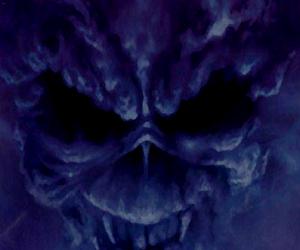Post by blacky on Feb 2, 2010 4:09:36 GMT 10
Not too far from the Colorado River, on the low desert just west of Highway 95, lies one of the most spectacular ancient creations in California––a group of immense drawings that, like Peru’s famous Nazca lines, can only be seen properly from the air. They are called the Blythe Intaglios.

Unseen by whites until the 20th century, these huge figures hidden on the desert floor were rediscovered from the air. In 1930, aviator George Palmer was flying over the area when he spotted enormous outlines of a man, a woman, a horse, a coiled snake,
and “horseshoes” on the top of a mesa. He reported his find to the Southwest Museum, but lacking funds because of the Depression, they couldn’t investigate the figures until 1952.
The Intaglios were seen again during the Forties by Army fliers on desert maneuvers. This time, the National Geographic Society and the Smithsonian Institution sent airborne archeologists to the site. An extensive article appeared in the September 1952 National Geographic, with aerial photos that showed the huge figures to the world.
Ancient artists created the figures using the intaglio process. They scraped away a shallow layer of dark surface soil and rock to reveal light-colored soil underneath, and piled dark gravel around the figures to outline them. Though portions of the effigies can be seen if one is standing right next to them, they are virtually invisible just a few feet away. Neither adjacent hills nor distant mountains offer clear views of the Intaglios.
The larger of the figures, thought to be the outline of a woman, is about 175 feet long. Her outstretched arms span 158 feet. Near her is an anatomically correct male figure, about 95 feet tall. There’s also a 53-foot-long, four-footed creature that’s been alternatively identified as a panther, a coyote or a horse.
Modern-day Mohave and Quechan Indians maintain that the human figures represent Mastamho, the Creator of Earth and all life, while the animal figures represent Hatakulya, one of two mountain lions who helped in the Creation. Others believe that the animal may represent the fabled indigenous American horse, which some zoologists think lived on the continent long before the Spanish brought their mounts here.

The coiled-snake figure has mostly been obliterated. Off-road vehicle drivers ground it into dust, and nearly destroyed the other figures as well.
Today, the Intaglios are protected by two lines of fences, and are open to the public at all times as a State Historic Monument. Their creators are long dead and their exact purpose remains a mystery, but the desert figures have finally been provided protection and well-deserved recognition as the most colossal of California’s many cryptic Indian drawings.

Unseen by whites until the 20th century, these huge figures hidden on the desert floor were rediscovered from the air. In 1930, aviator George Palmer was flying over the area when he spotted enormous outlines of a man, a woman, a horse, a coiled snake,
and “horseshoes” on the top of a mesa. He reported his find to the Southwest Museum, but lacking funds because of the Depression, they couldn’t investigate the figures until 1952.
The Intaglios were seen again during the Forties by Army fliers on desert maneuvers. This time, the National Geographic Society and the Smithsonian Institution sent airborne archeologists to the site. An extensive article appeared in the September 1952 National Geographic, with aerial photos that showed the huge figures to the world.
Ancient artists created the figures using the intaglio process. They scraped away a shallow layer of dark surface soil and rock to reveal light-colored soil underneath, and piled dark gravel around the figures to outline them. Though portions of the effigies can be seen if one is standing right next to them, they are virtually invisible just a few feet away. Neither adjacent hills nor distant mountains offer clear views of the Intaglios.
The larger of the figures, thought to be the outline of a woman, is about 175 feet long. Her outstretched arms span 158 feet. Near her is an anatomically correct male figure, about 95 feet tall. There’s also a 53-foot-long, four-footed creature that’s been alternatively identified as a panther, a coyote or a horse.
Modern-day Mohave and Quechan Indians maintain that the human figures represent Mastamho, the Creator of Earth and all life, while the animal figures represent Hatakulya, one of two mountain lions who helped in the Creation. Others believe that the animal may represent the fabled indigenous American horse, which some zoologists think lived on the continent long before the Spanish brought their mounts here.

The coiled-snake figure has mostly been obliterated. Off-road vehicle drivers ground it into dust, and nearly destroyed the other figures as well.
Today, the Intaglios are protected by two lines of fences, and are open to the public at all times as a State Historic Monument. Their creators are long dead and their exact purpose remains a mystery, but the desert figures have finally been provided protection and well-deserved recognition as the most colossal of California’s many cryptic Indian drawings.







 Happy New Years Everybody!!!
Happy New Years Everybody!!!
